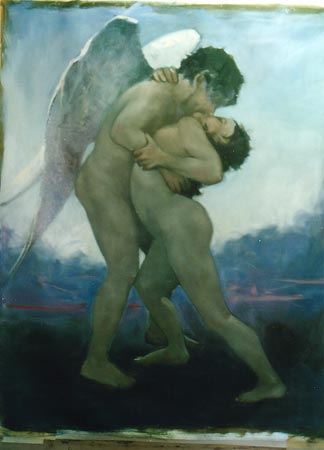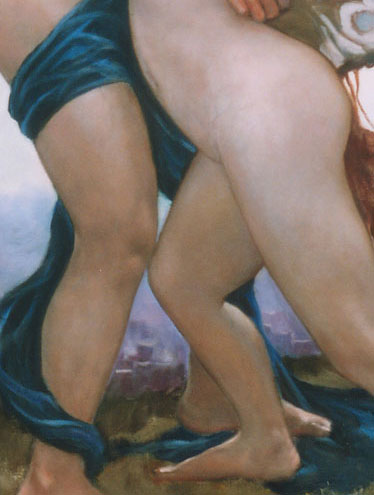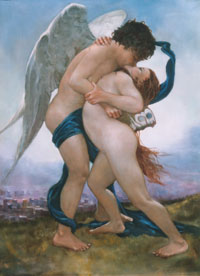'Realism'
In Fig.5 I have brought some of the highlights forward by use of a higher value blue-gray and added some wings. This stage you could call 'molding' the forms or to use its proper terminology you could call it the application of chiaroscuro. This was the method made famous by the Renaissance painter Carravaggio and copied in the north by painters such as Rembrandt, Rubens and Vermeer.
This is a large step away from the 'ideal' toward the 'real' and needs to be handled with the same care a jazz musician might use a discord to amplify a harmony. Not too much that might make it look like a blue road map. No doubt the display of veins and arteries is not one that would normally attract the viewer BUT in this case it has another purpose. It throws into the mix of the ideal figures and perfect forms something that might otherwise be thought ugly. In Fig.7 you can see where I have shown the veins that occur between the thigh and torso of the female, and the thigh of the male. Also note in Fig.8 and elsewhere I have reddened hands, feet, knees, elbows and faces as the blood is closer to the surface in these more sensitive areas. How is this done with paint?
|



